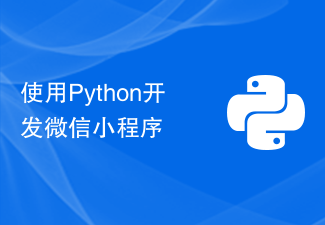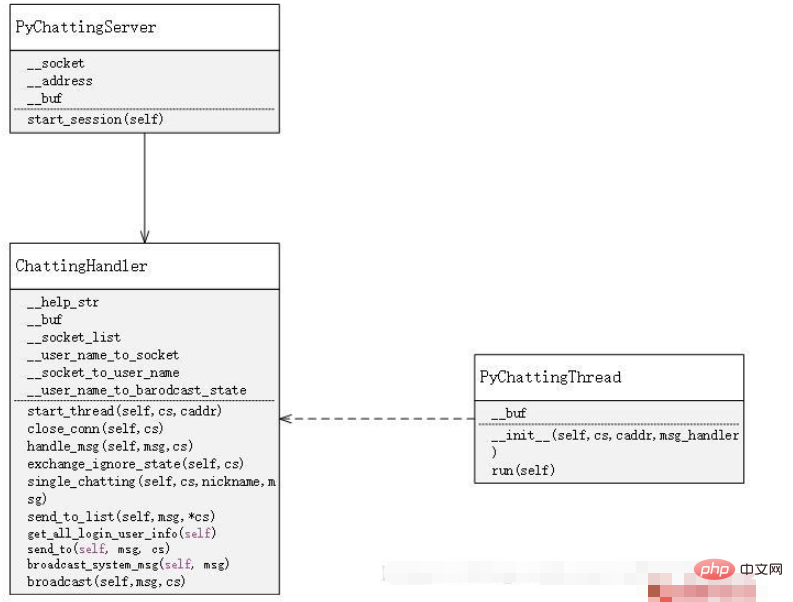TodayWeChat Mini Program Development Tutorial column will introduce you to the traceless embedding points of Mini Programs.

Background
Since the release of WeChat mini program, it has been positioned from being compact and ready to go to containing complex functions and complete Business mobile applications.
Following this, there will be more bugs that are difficult to locate and cannot be easily reproduced in production operations. Especially since I am engaged in banking business development and have extremely high stability requirements, otherwise it will easily lead to customer complaints and even financial losses. loss.
In addition, in order to do user research, we need to understand how users use our mini program, such as routing timing, click stream, etc.
All of the above require complete and available logs to discover and locate production problems and track user behavior.
Log type
Looking through the api documentation, there are three ways to print logs in the mini program. The brief description is as follows:
Console log (console): Used for debugging during the development and testing phase
Real-time log (wx.getRealtimeLogManager): records user operations in real time. The official provides good filtering and can accurately locate specific logs; the daily limit is 5 million However, multiple printouts will be merged into one report; it will be kept for up to 7 days. Portal
Local log (wx.getLogManage): Client local log. Users can click "Feedback and Complaints" or click the feedback component on the page to synchronize it to the management console; maximum 5m. Portal
Collection reporting and data desensitization
For specific problems, different logs may need to be used to locate them, or they may be combined to corroborate user behavior.
So we need to report several logs at the same time, but for some business-sensitive data, it may not be suitable to report to an external system (WeChat server) or save it locally on the client. We can first report it in the encapsulated collection reporting function. Desensitize the data.
The method is very simple. It traverses the log object and codes the sensitive data through regular matching.
The real-time log after desensitization is as follows:

#You can refer to our encapsulated log plug-in @wxa/log
Traceless burial point
Event capture
Generally speaking, front-end logs include at least: routing switching information, script error logs, interface request data, user interaction information
In the mini program, the front-end log Third, data can be captured and reported through the official monitoring interface and encapsulated functions.
Only user interaction information, because of the dual-thread architecture of the applet, it is impossible to capture user events directly in the document object like h5. Events can only be bound to the outermost layer of each wxml template to monitor user behavior.
But there is still no way to capture non-bubble events (such as catchtap) and component events (such as getuserinfo).
Furthermore, there is no way to capture all events, and component events will not bubble up.
Hijacking events
In a different way, can you hijack all the event functions in the mini program to achieve event capture? Can.
Normal events and component events in WeChat mini programs are bindComplete event capture and reporting in the hook function, and then execute the originally bound event to implement event hook functions similar to beforeEevent and afterEvent.
Component identificationThe event object does not have detailed information about the component that triggered the event (similar to metadata of xpath). If there are two components on the page that are bound to the same event, then we How to distinguish which component the user clicked to trigger the event.
You can combine the component's component name, id, class and other information to construct an id for the component. The format is:
eventName*tagName#id.class(data)复制代码
For example,
<button id="btn" class="confirm" bindtap="submit">确认</button>复制代码
through hijacking After adding the event and identification information, the actual output code is:
<button id="btn" class="confirm"
bindtap="beforeTag"
data-wxa-hijack="sumbit"
mark:eleId="tap*button#btn.confirm(确认)">确认</button>复制代码Then in the event object, you can get the component identification through e.mark.eleId
Implement the interception function
import BindHijackPlugin from "@wxa/plugin-bind-hijack/runtime";
wxa.use(BindHijackPlugin, {
beforeTap: function(e){
$log('tap event', e);
},
afterTap: function(e){
console.log('afterTap', e);
},
before: function(e){ //所有事件拦截
console.log('before', e);
},
after: function(e){
console.log('after', e);
},
});复制代码 Automatic events
It should be noted that some events in the mini program are automatically executed. For example, when the component swiper sets autoplay to true, it will automatically execute the change event at the specified interval. You need to judge the source. To exclude non-user behavior, otherwise the hook function will always be triggered.

Implementation
Based on the wxa framework, we implement the interception of all events in the form of plug-ins.
The wxa applet framework refers to the compile-time plug-in system built by webpack based on the tapable event stream, which can easily expand its functions. Combined with the wxa compilation completion hook and the htmlprase library, the event function of the wxml file is tampered with and the element id is generated. For details, you can directly check the source code @wxa/plugin-bind-hijack
wxa Mini Program Framework
wxa Mini Program Framework focuses on the native development of mini programs, while retaining the simplicity of entry and rapid development of mini programs Based on its characteristics, it provides a series of capabilities to solve the pain points of engineering and code reuse, improve development efficiency and improve the development experience.
Related free learning recommendations: WeChat Mini Program Development Tutorial
The above is the detailed content of Understand the hidden secrets of mini programs. For more information, please follow other related articles on the PHP Chinese website!
 使用Python开发微信小程序Jun 17, 2023 pm 06:34 PM
使用Python开发微信小程序Jun 17, 2023 pm 06:34 PM随着移动互联网技术和智能手机的普及,微信成为了人们生活中不可或缺的一个应用。而微信小程序则让人们可以在不需要下载安装应用的情况下,直接使用小程序来解决一些简单的需求。本文将介绍如何使用Python来开发微信小程序。一、准备工作在使用Python开发微信小程序之前,需要安装相关的Python库。这里推荐使用wxpy和itchat这两个库。wxpy是一个微信机器
 小程序能用react吗Dec 29, 2022 am 11:06 AM
小程序能用react吗Dec 29, 2022 am 11:06 AM小程序能用react,其使用方法:1、基于“react-reconciler”实现一个渲染器,生成一个DSL;2、创建一个小程序组件,去解析和渲染DSL;3、安装npm,并执行开发者工具中的构建npm;4、在自己的页面中引入包,再利用api即可完成开发。
 用Python编写简单的聊天程序教程May 08, 2023 pm 06:37 PM
用Python编写简单的聊天程序教程May 08, 2023 pm 06:37 PM实现思路x01服务端的建立首先,在服务端,使用socket进行消息的接受,每接受一个socket的请求,就开启一个新的线程来管理消息的分发与接受,同时,又存在一个handler来管理所有的线程,从而实现对聊天室的各种功能的处理x02客户端的建立客户端的建立就要比服务端简单多了,客户端的作用只是对消息的发送以及接受,以及按照特定的规则去输入特定的字符从而实现不同的功能的使用,因此,在客户端这里,只需要去使用两个线程,一个是专门用于接受消息,一个是专门用于发送消息的至于为什么不用一个呢,那是因为,只
 Java语言中的微信小程序开发介绍Jun 09, 2023 pm 10:40 PM
Java语言中的微信小程序开发介绍Jun 09, 2023 pm 10:40 PM微信小程序是一种轻量级的应用程序,可以在微信平台上运行,不需要下载安装,方便快捷。Java语言作为一种广泛应用于企业级应用开发的语言,也可以用于微信小程序的开发。在Java语言中,可以使用SpringBoot框架和第三方工具包来开发微信小程序。下面是一个简单的微信小程序开发过程。创建微信小程序首先,需要在微信公众平台上注册一个小程序。注册成功后,可以获取到
 PHP与小程序的地理位置定位与地图显示Jul 04, 2023 pm 04:01 PM
PHP与小程序的地理位置定位与地图显示Jul 04, 2023 pm 04:01 PMPHP与小程序的地理位置定位与地图显示地理位置定位与地图显示在现代科技中已经成为了必备的功能之一。随着移动设备的普及,人们对于定位和地图显示的需求也越来越高。在开发过程中,PHP和小程序是常见的两种技术选择。本文将为大家介绍PHP与小程序中的地理位置定位与地图显示的实现方法,并附上相应的代码示例。一、PHP中的地理位置定位在PHP中,我们可以使用第三方地理位
 教你如何在小程序中用公众号模板消息(附详细思路)Nov 04, 2022 pm 04:53 PM
教你如何在小程序中用公众号模板消息(附详细思路)Nov 04, 2022 pm 04:53 PM本篇文章给大家带来了关于微信小程序的相关问题,其中主要介绍了如何在小程序中用公众号模板消息,下面一起来看一下,希望对大家有帮助。
 小程序中文件上传的PHP实现方法Jun 02, 2023 am 08:40 AM
小程序中文件上传的PHP实现方法Jun 02, 2023 am 08:40 AM随着小程序的广泛应用,越来越多的开发者需要将其与后台服务器进行数据交互,其中最常见的业务场景之一就是上传文件。本文将介绍在小程序中实现文件上传的PHP后台实现方法。一、小程序中的文件上传在小程序中实现文件上传,主要依赖于小程序APIwx.uploadFile()。该API接受一个options对象作为参数,其中包含了要上传的文件路径、需要传递的其他数据以及
 苏州健康码的小程序叫什么Oct 24, 2022 am 09:47 AM
苏州健康码的小程序叫什么Oct 24, 2022 am 09:47 AM苏州健康码的小程序叫“苏康码”,它是苏州市疫情防控指挥部指定的通行服务码,疫情防控期间在全市范围内通用,可以作为广大民众日常出行的重要凭证,同时作为防疫人员查验的主要依据;也是省内所有来苏逗苏人员以及在苏工作学习生活,旅游或临时停留人员申报的键康申报数据为基础,结合相关数据比对后动态生成的个人电子健康凭证。


Hot AI Tools

Undresser.AI Undress
AI-powered app for creating realistic nude photos

AI Clothes Remover
Online AI tool for removing clothes from photos.

Undress AI Tool
Undress images for free

Clothoff.io
AI clothes remover

AI Hentai Generator
Generate AI Hentai for free.

Hot Article

Hot Tools

Dreamweaver Mac version
Visual web development tools

SAP NetWeaver Server Adapter for Eclipse
Integrate Eclipse with SAP NetWeaver application server.

Atom editor mac version download
The most popular open source editor

VSCode Windows 64-bit Download
A free and powerful IDE editor launched by Microsoft

SublimeText3 Chinese version
Chinese version, very easy to use







